Ngorongoro Crater is a natural wonder that attracts millions of tourists each year. It is known for its unique landscapes and diverse wildlife, including a wide range of bird species.
The crater is a protected area that is home to over 500 bird species, which makes it an incredible destination for bird lovers. The Ngorongoro crater houses a variety of bird species ranging from raptors and scavengers to waterfowl and passerines.
This article provides an overview of the birds found in Ngorongoro Crater, highlighting their unique features, behavior, and habitat.
1. Augur Buzzard
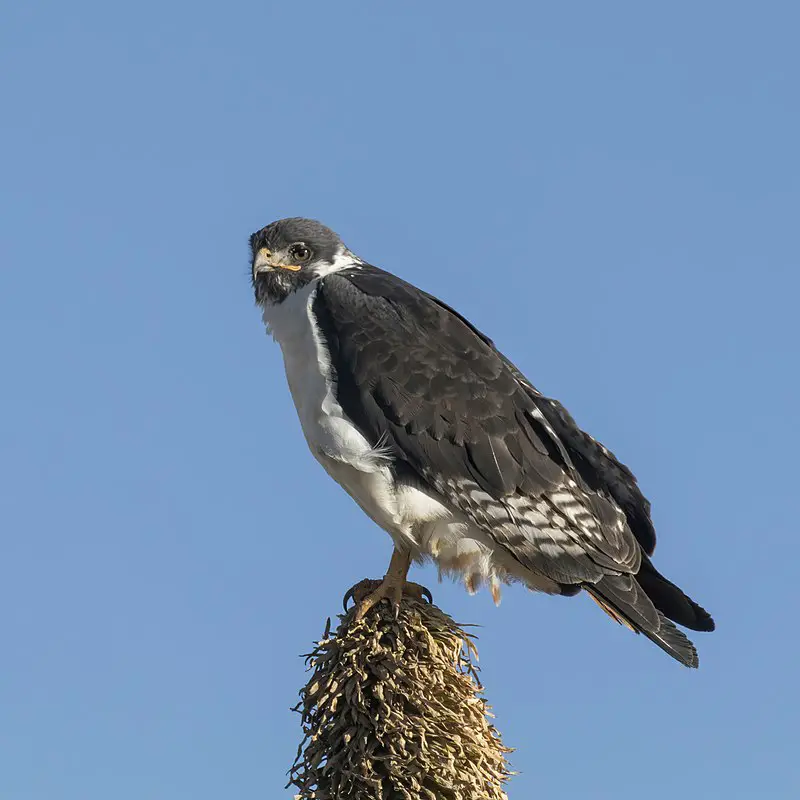
The Augur Buzzard is an impressive African bird of prey, typically identified by its blackish back and wings, white underside and orange-red tail. A dark morph also exists for this species while juveniles are usually brown in colour.
It is found throughout Central and Southern Africa where it inhabits a variety of habitats ranging from grasslands to wooded savannas.
This Buteo genus member has a wide range of food sources including rodents, reptiles, insects and other birds making it quite versatile when hunting for sustenance.
Its powerful talons allow the buzzard to snatch up large prey with ease ensuring that meals are never far away.Scientific classification:
| Kingdom | Animalia |
| Phylum | Chordata |
| Class | Aves |
| Order | Accipitriformes |
| Family | Accipitridae |
| Genus | Buteo |
| Species | B. augur |
Also Featured In: Common Ethiopian Birds, East African Birds
2. Black-Headed Heron
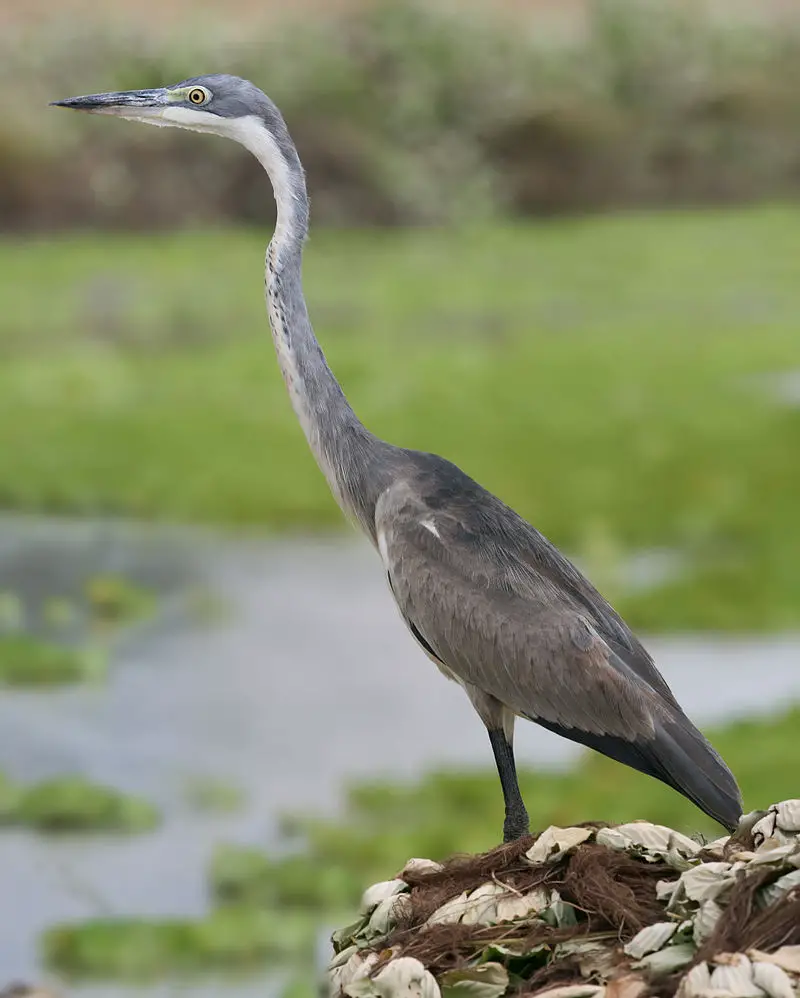
The Black-headed Heron is a wading bird from the heron family Ardeidae, found in sub-Saharan Africa and Madagascar.
It typically resides in wetland areas such as reedbeds or swamps but some birds migrate further north during rainy seasons.
Breeding usually takes place between two to four eggs laid within a bulky stick nest built by both parents.
The Black-headed Heron feeds mainly on small fish, crustaceans and other aquatic organisms which it catches with its long bill while standing still at water’s edge or slowly moving around shallow waters.
Its feathers are usually mostly white apart from the black head for which this species has been named after and grey wings with distinctive dark patches near shoulder area giving them an attractive appearance when seen up close.Scientific classification:
| Kingdom | Animalia |
| Phylum | Chordata |
| Class | Aves |
| Order | Pelecaniformes |
| Family | Ardeidae |
| Genus | Ardea |
| Species | A. melanocephala |
Also Featured In: Birds of Tanzania, Birds You’ll Find in Kenya Safari
3. Yellow-Billed Oxpecker
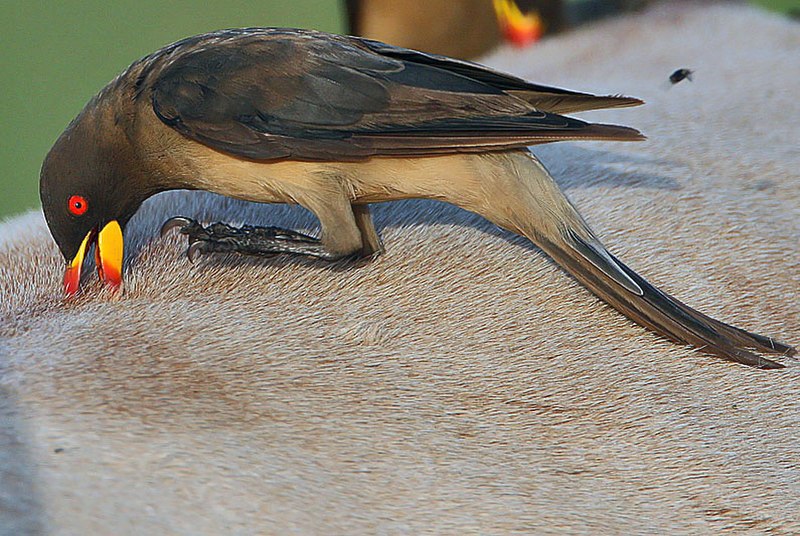
The Yellow-billed Oxpecker is a passerine bird native to the savannahs of Sub-Saharan Africa. It was previously placed in the starling and myna family, Sturnidae.
These birds are characterized by their bright yellow bills, which give them their name.
They feed mainly on insects found on large mammals such as wildebeests and zebras, but also consume fruits from nearby trees or shrubs when available.
The species tends to dominate over its smaller relative -the Red-billed oxpecker – whenever they share feeding grounds together; although it is least common in eastern parts of its range where they overlap with each other’s territories.
All in all, this beautiful avian creature makes for an interesting sight while exploring the African Savannah.Scientific classification:
| Kingdom | Animalia |
| Phylum | Chordata |
| Class | Aves |
| Order | Passeriformes |
| Family | Buphagidae |
| Genus | Buphagus |
| Species | B. africanus |
Also Featured In: Uganda Birds Species, Savanna Birds You Need to See
4. Red-Billed Oxpecker
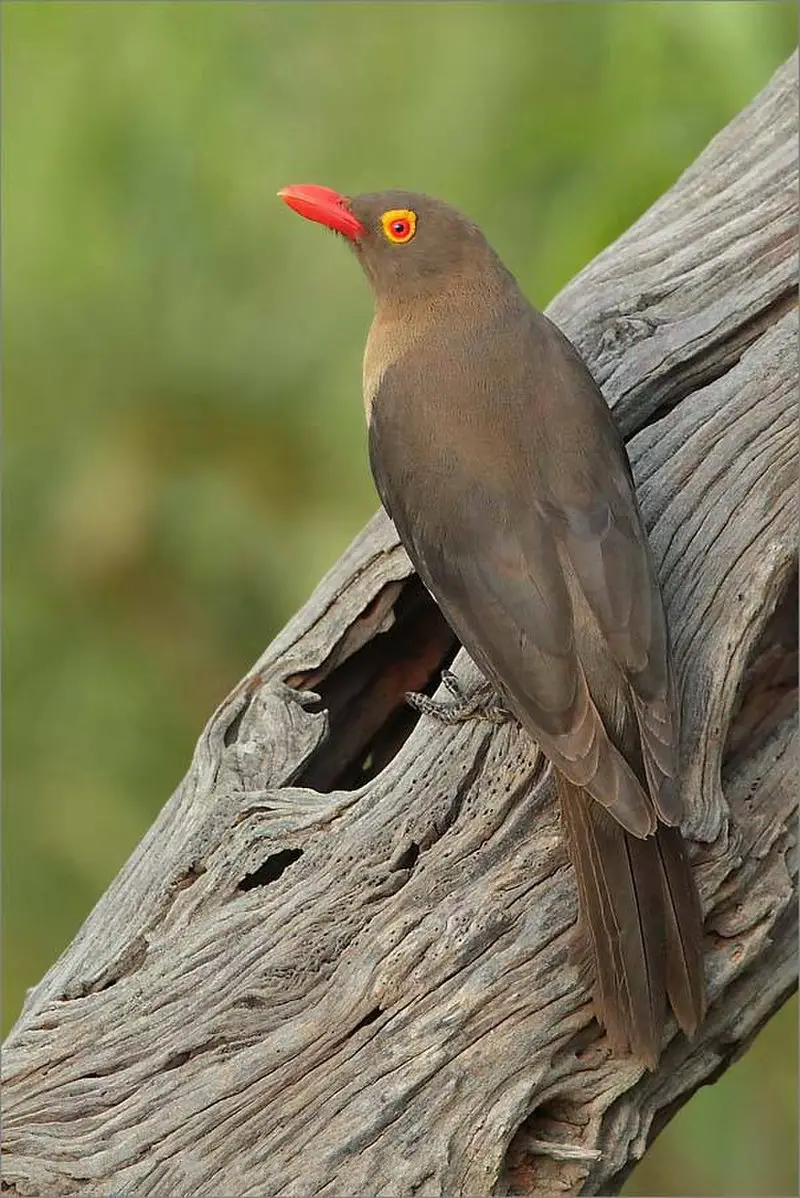
The red-billed oxpecker is a vibrant bird native to the savannas of sub-Saharan Africa. It has bright chestnut plumage, with distinctive yellow and black markings on its wings and tail.
The beak is a deep crimson color, for which it gets its name. These birds live in small flocks that often roost together at night or feed near large herds of animals such as zebra or wildebeest during the day.
They mainly eat ticks off these larger mammals but will also take advantage of any other food sources they can find such as fruits or insects.
Red-billed oxpeckers are known to have an important relationship with their prey; by removing parasites from them they help prevent diseases from spreading amongst different species in the area.Scientific classification:
| Kingdom | Animalia |
| Phylum | Chordata |
| Class | Aves |
| Order | Passeriformes |
| Family | Buphagidae |
| Genus | Buphagus |
| Species | B. erythrorynchus |
Also Featured In: Most common bird in Zambia, Birds that You’ll Find in Kruger national park
5. Eastern Double-Collared Sunbird
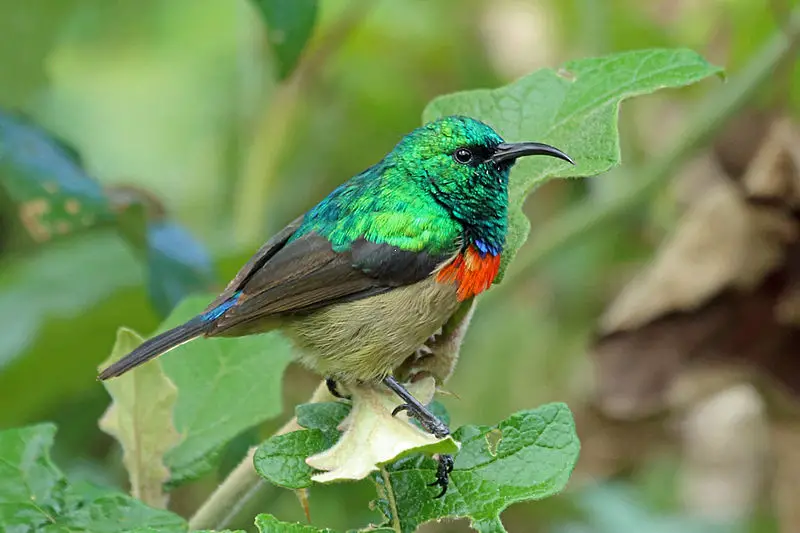
The Eastern double-collared sunbird is a tiny bird that lives in upland areas of Kenya and Northern Tanzania. Adult males have a metallic green upper body, red breast band, and olive belly.
Their beaks are curved and used to sip nectar from flowers. These birds are common in their habitat, and their populations seem to be stable.
They are known for their beautiful appearance and their role as pollinators, helping to spread pollen from flower to flower.
Their unique coloring makes them easy to spot, but they can be quite elusive when they need to be.
Overall, the Eastern double-collared sunbird is a fascinating and important species of bird that adds beauty and interest to their environment.Scientific classification:
| Kingdom | Animalia |
| Phylum | Chordata |
| Class | Aves |
| Order | Passeriformes |
| Family | Nectariniidae |
| Genus | Cinnyris |
| Species | C. mediocris |
6. White-Eyed Slaty Flycatcher
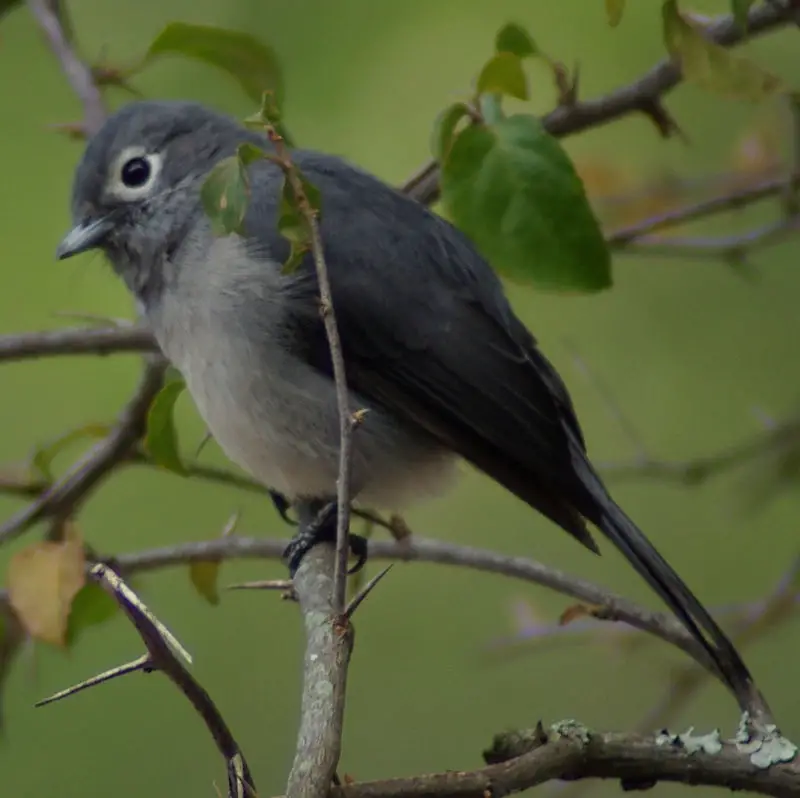
The White-eyed slaty flycatcher is a small bird found in the African highlands. It belongs to the Muscicapidae family and is native to countries like Ethiopia, Kenya, Malawi, and Rwanda.
With inconspicuous eye-rings, the sub-species M. f. toruensis is found in Rwanda and Burundi. This bird is known for its distinct white eyes and slate-grey feathers. It feeds on insects and is often found in woodland habitats.
The species is named after the German explorer Gustav Fischer. Its scientific name is Melaenornis fischeri. Despite being small in size, this bird is known for its swift movements when catching prey.
Its distinct appearance and lively behavior make it a popular sighting among bird watchers in the African highlands.Scientific classification:
| Kingdom | Animalia |
| Phylum | Chordata |
| Class | Aves |
| Order | Passeriformes |
| Family | Muscicapidae |
| Genus | Melaenornis |
| Species | M. fischeri |
7. Fischer’s Sparrow-Lark
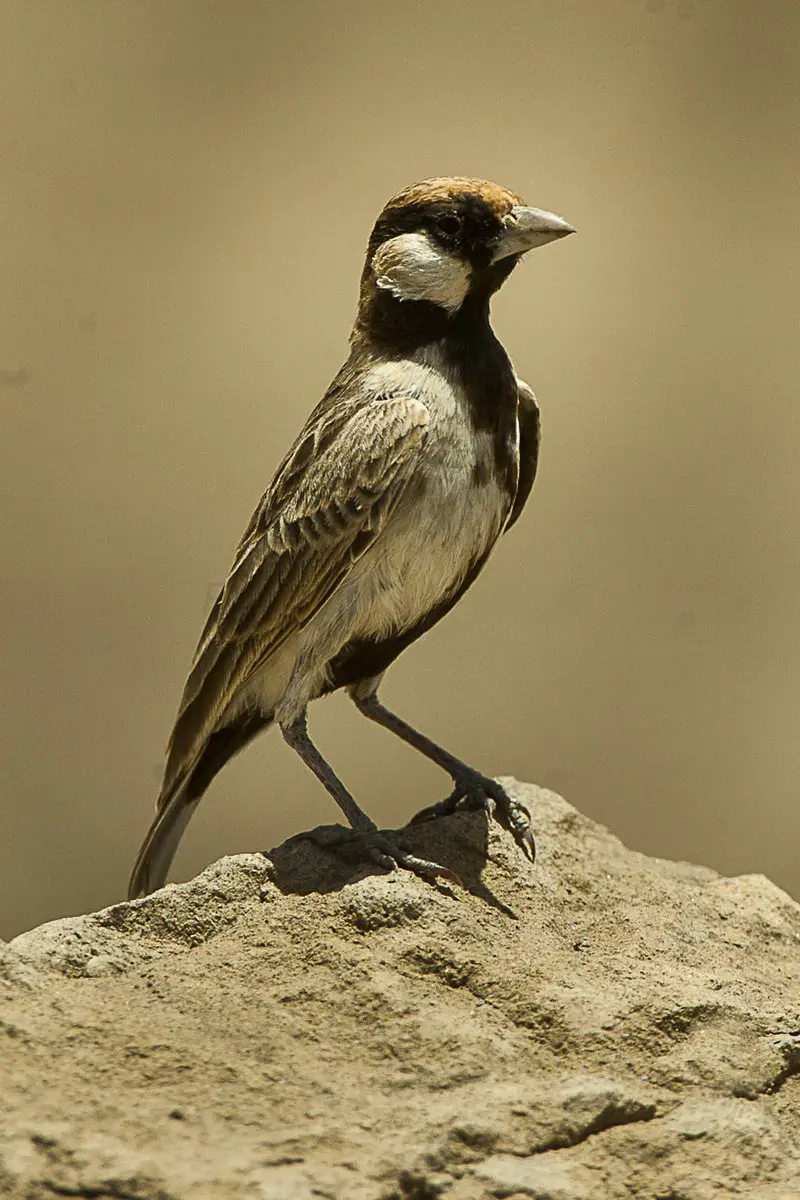
Fischer’s sparrow-lark is a small, dull-colored bird found in central Kenya, eastern Zambia, Malawi, and north-western Mozambique. It inhabits subtropical or tropical dry lowland grasslands.
It has a finch-like appearance and is often mistaken for a chestnut-headed sparrow-lark but can be identified by its distinct white underparts. This passerine bird is inconspicuous and not easily spotted in its natural habitat.Scientific classification:
| Kingdom | Animalia |
| Phylum | Chordata |
| Class | Aves |
| Order | Passeriformes |
| Family | Alaudidae |
| Genus | Eremopterix |
| Species | E. leucopareia |
8. African Hoopoe
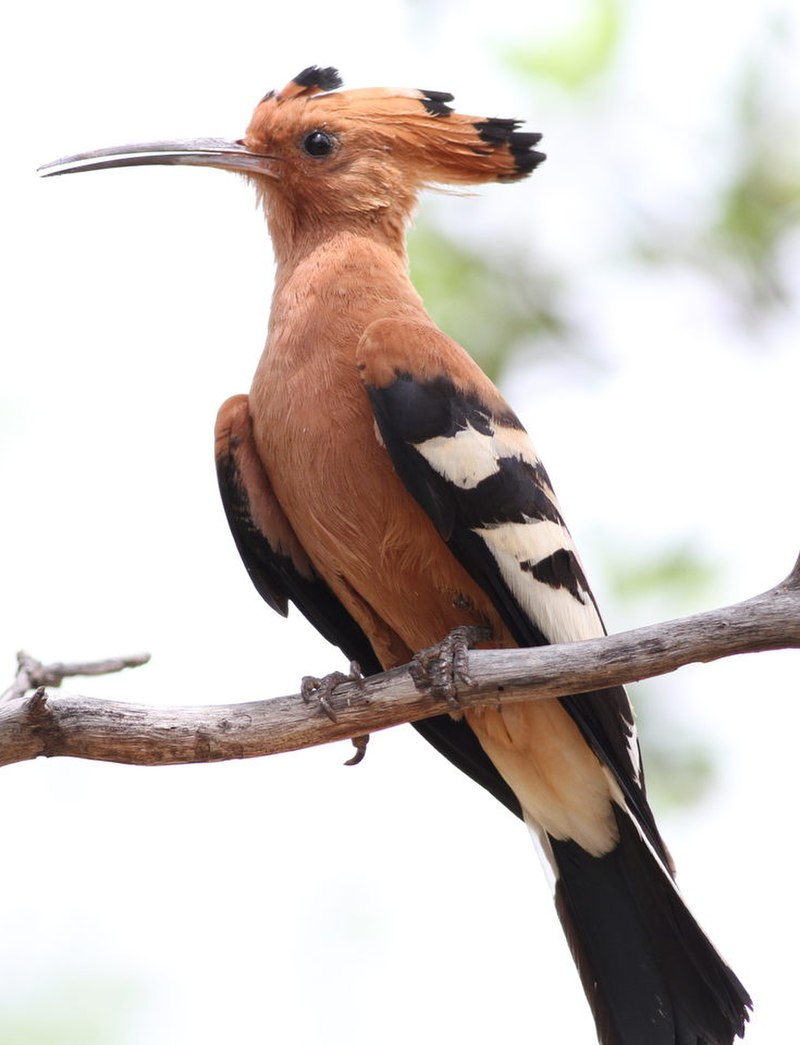
The African hoopoe, resident in southern Africa, is a bird in the family Upupidae. Initially classified as a subspecies of the Eurasian hoopoe, it was formally described as Upupa africana in 1811 by Johann Matthäus Bechstein.
This species is known for its distinctive appearance, characterized by a large crest on its head and a long, thin beak. Its plumage is a blend of black, white, and chestnut, with distinctive spotted and striped patterns.
Found in savannas and grasslands, the African hoopoe feeds on insects and other small invertebrates, which it captures with a swift jab of its beak.
The bird is known for its impressive vocalizations, which include a series of melodious trills and calls that can carry over long distances.
Overall, the African hoopoe is a unique and fascinating species of bird that has captivated observers for centuries.Scientific classification:
| Kingdom | Animalia |
| Phylum | Chordata |
| Class | Aves |
| Order | Bucerotiformes |
| Family | Upupidae |
| Genus | Upupa |
| Species | U. africana |